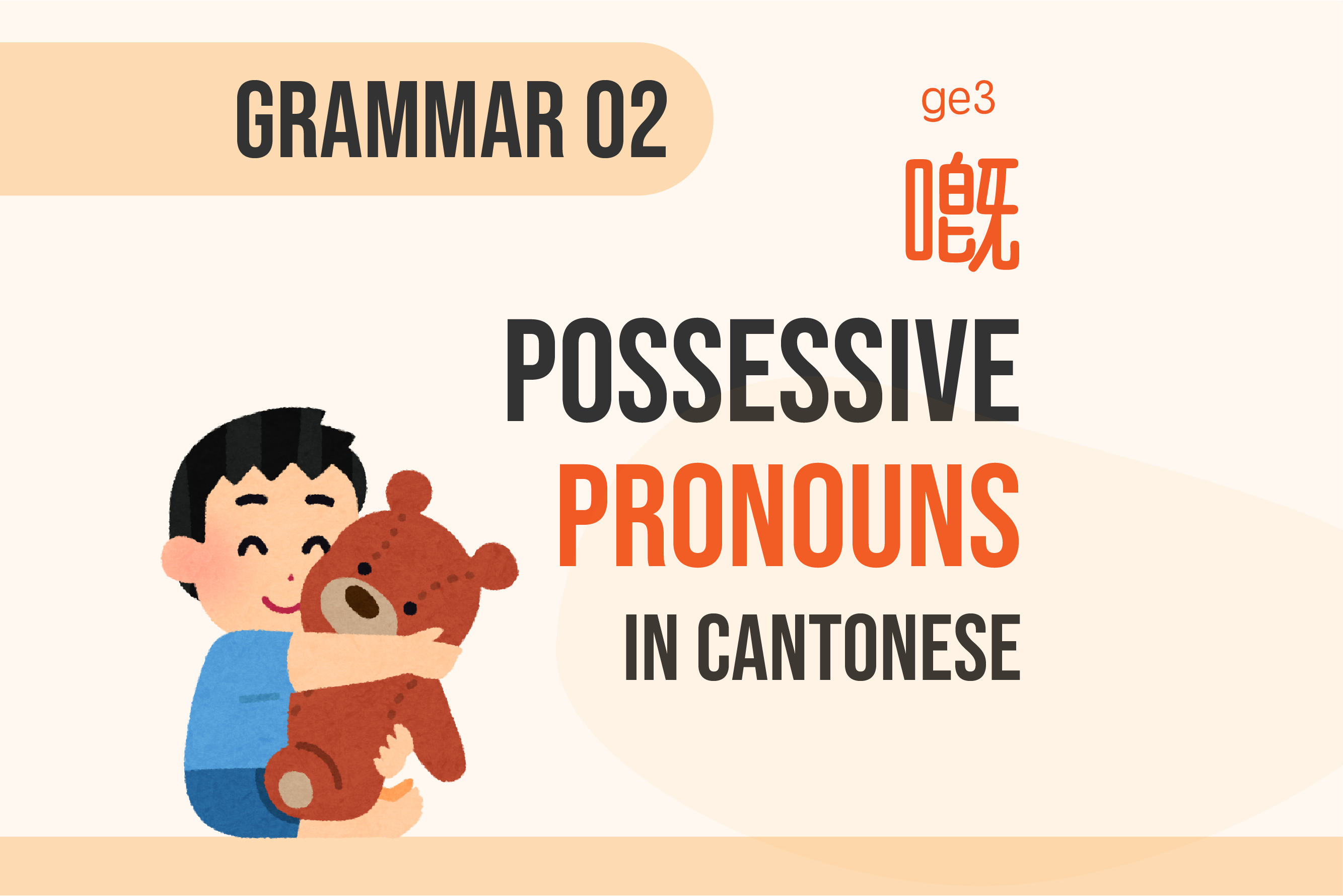Possessive pronouns in Cantonese are quite straightforward. Instead of having specific words like "mine," "yours," or "hers" as in English, we simply add 嘅 after the personal pronoun, functioning similarly to the possessive marker 's in English.
The Mandarin equivalent of 嘅 is 的.
Cantonese Possessive Pronouns
Note that all Jyutping romanization markers above each character can be clicked to play audio.
1st | 2nd | 3rd | |
Singular | 我嘅 | 你嘅 | 佢嘅 |
|---|---|---|---|
Mine | Yours | His/Hers | |
Plural | 我哋嘅 | 你哋嘅 | 佢哋嘅 |
Ours | Yours (plu.) | Theirs |
Example Sentences
呢本書係我嘅
This book is mine.呢幅畫係你嘅
This painting is yours.呢張枱係佢嘅
This table is his/hers.呢個地方係我哋嘅
This place is ours.呢間屋係你哋嘅
This house is yours.呢部電腦係佢哋嘅
This computer is theirs.
Demonstratives (this/that/these/those + noun.) are used in the above example sentences. Learn more about demonstratives in Grammar03 - Demonstratives 呢&嗰.
Also, when it comes to possessive determiners, the rules become more complex. Learn more about possessive determiners in Grammar04 - Possessive Determiners.
Further Grammar Insights
Review the usage of 係 in Grammar01 - Linking Verb ~係~
Review the usage of Personal Pronouns in Vocabulary02 - Personal Pronouns 我你佢
